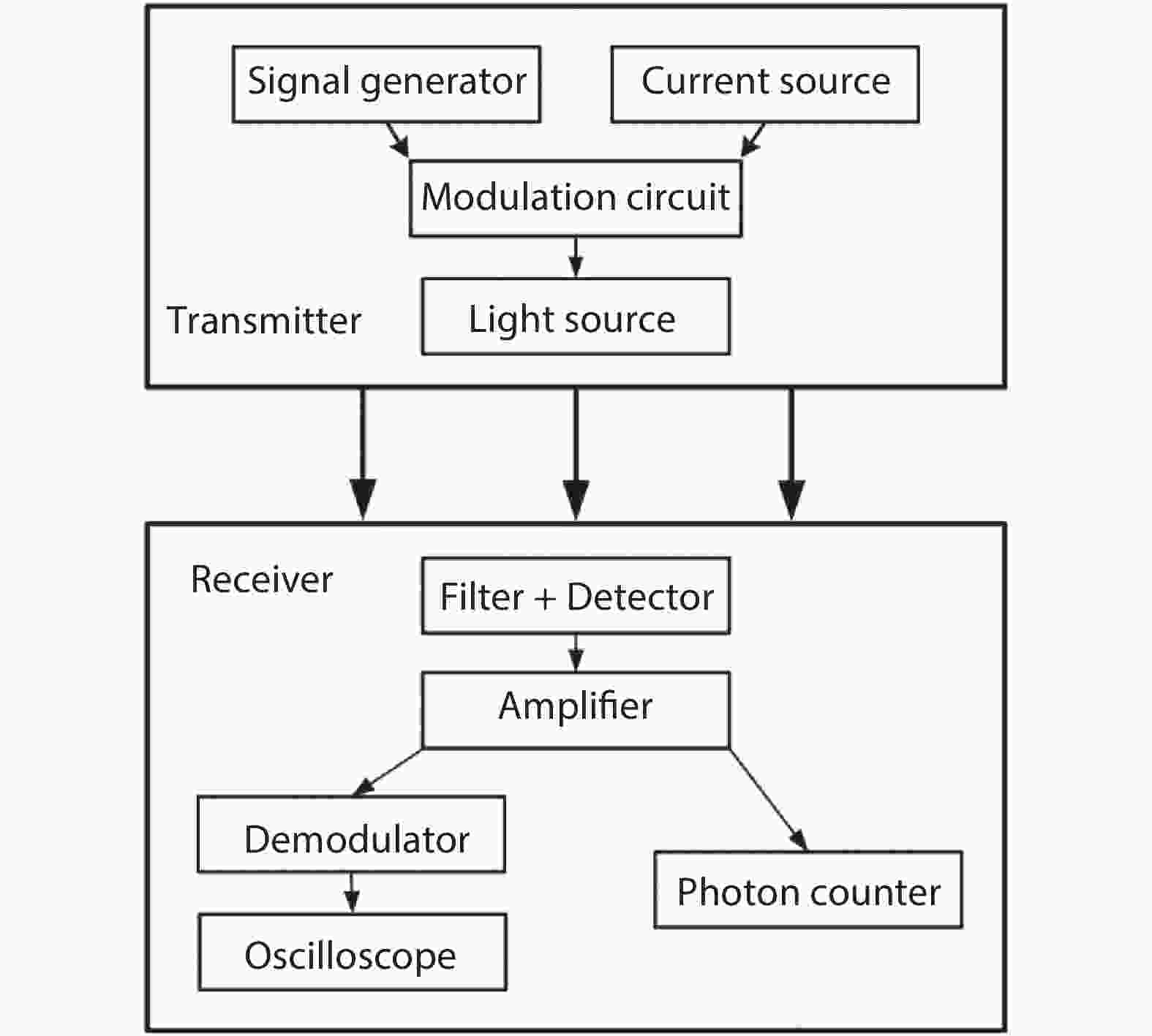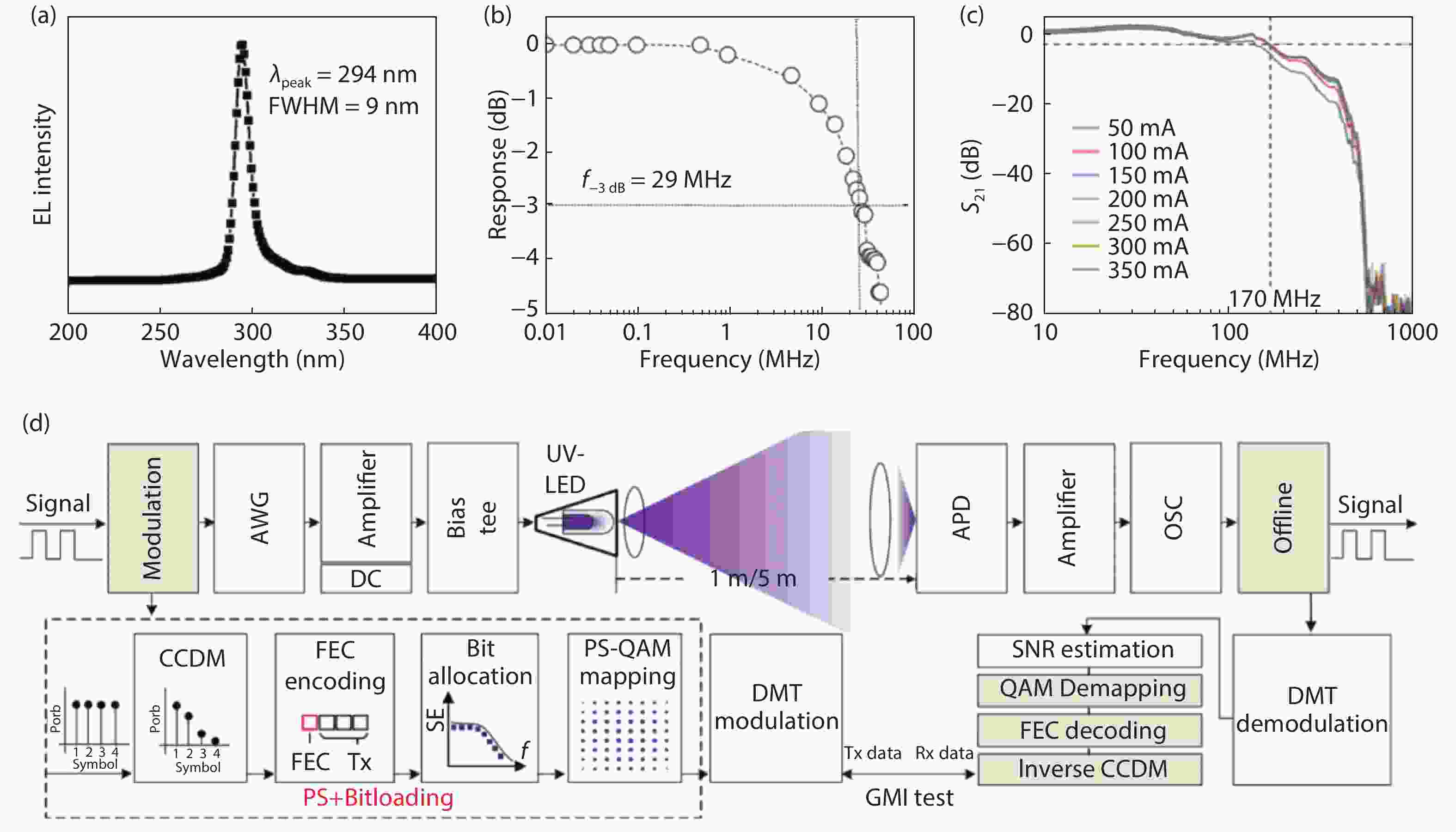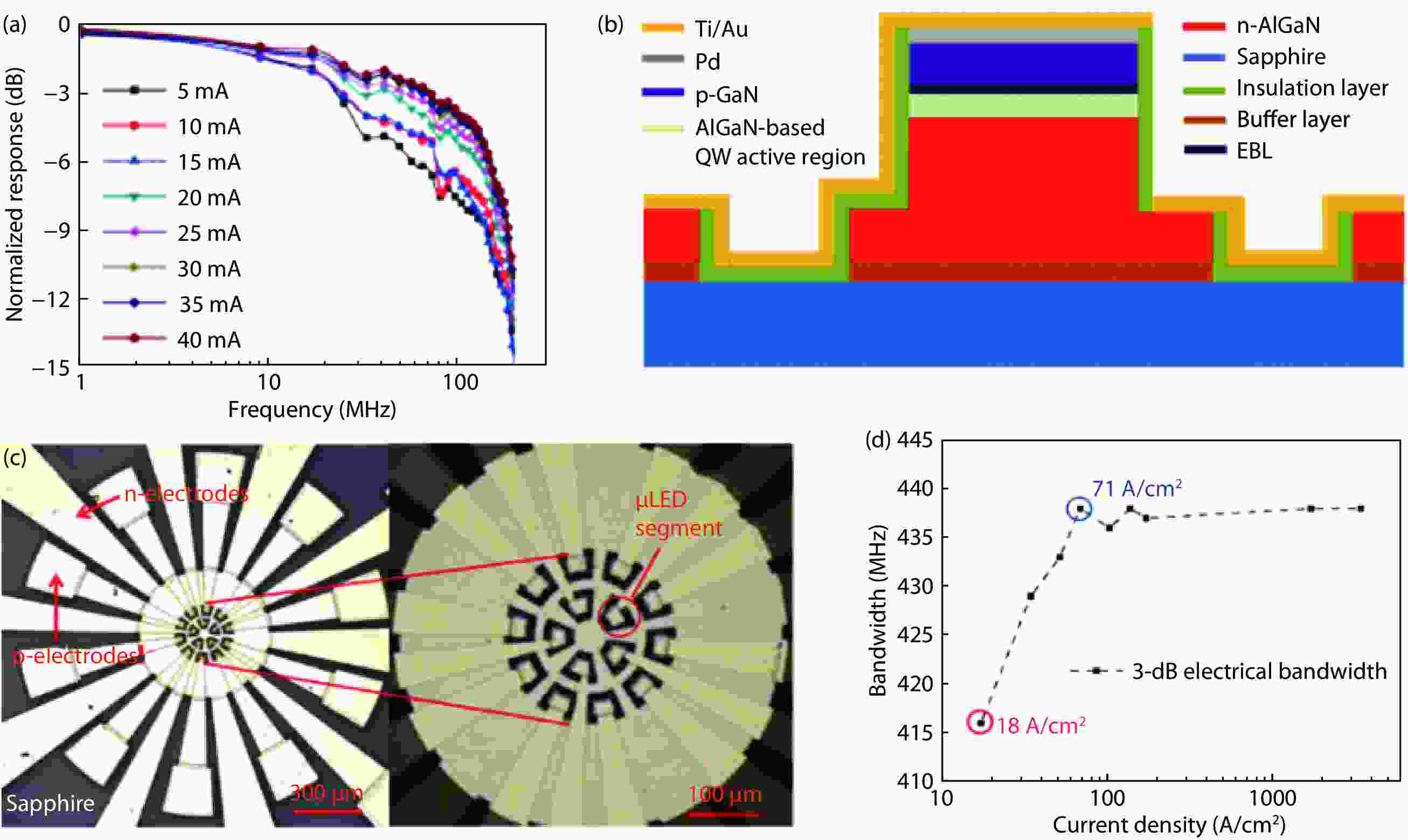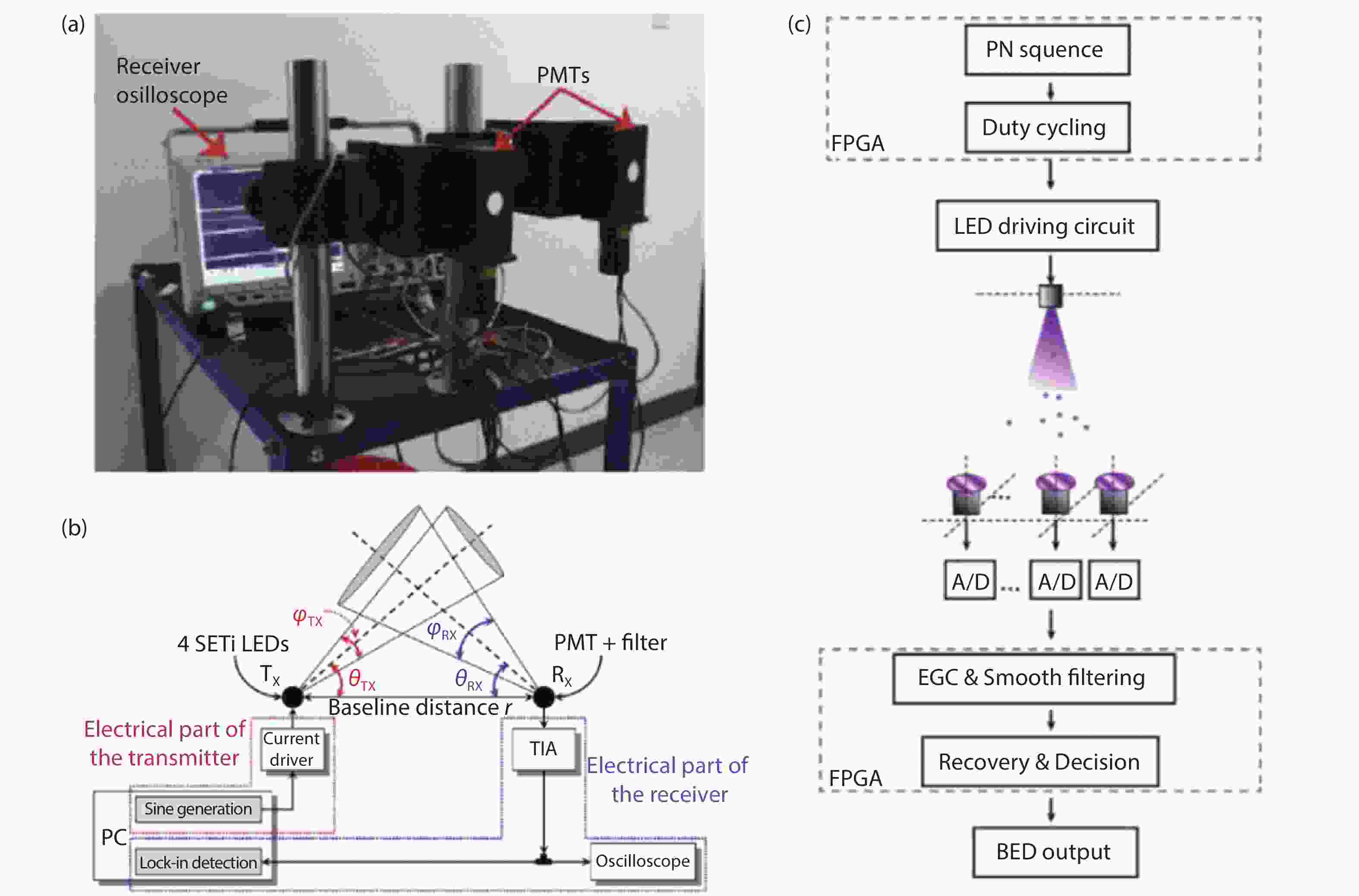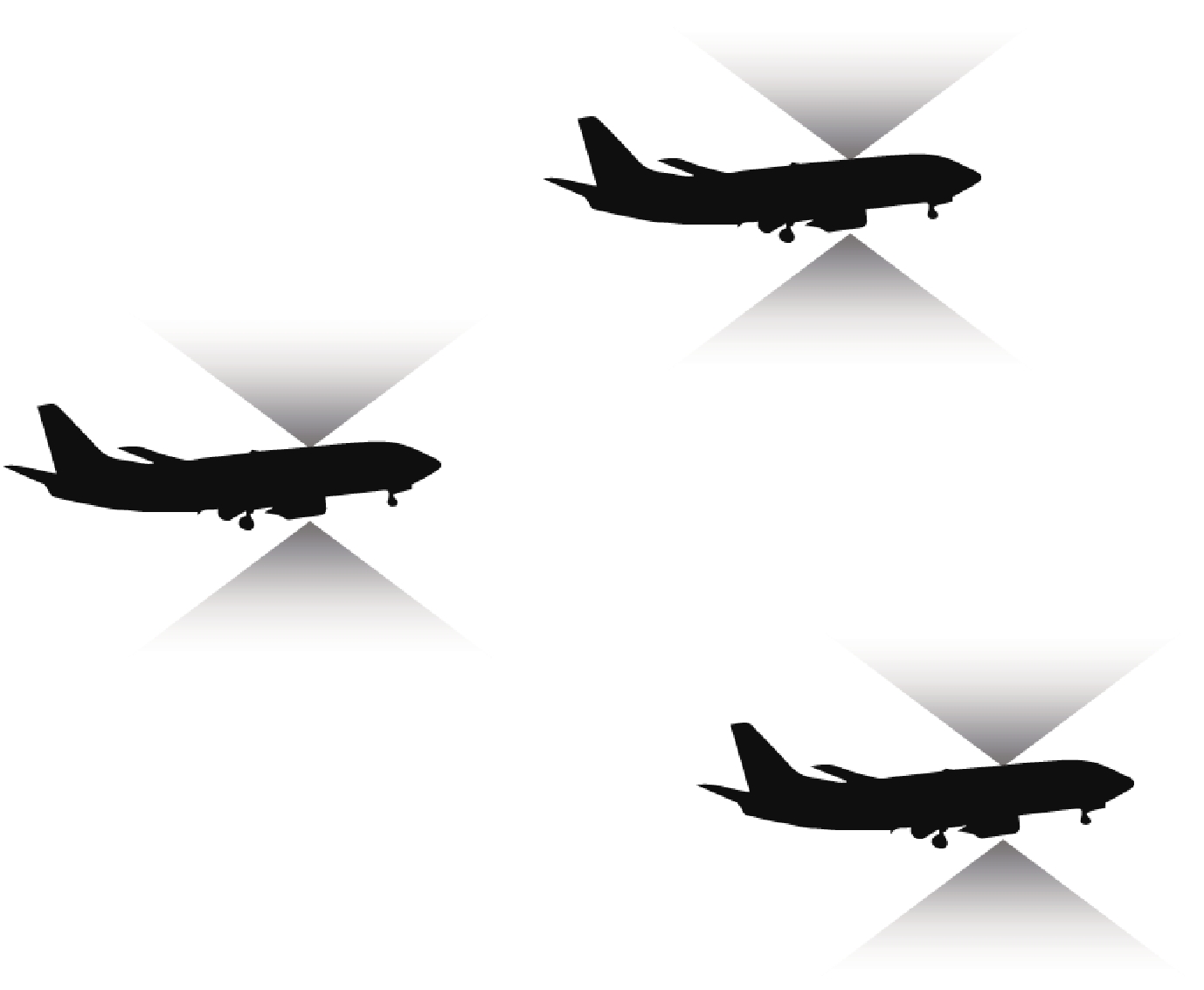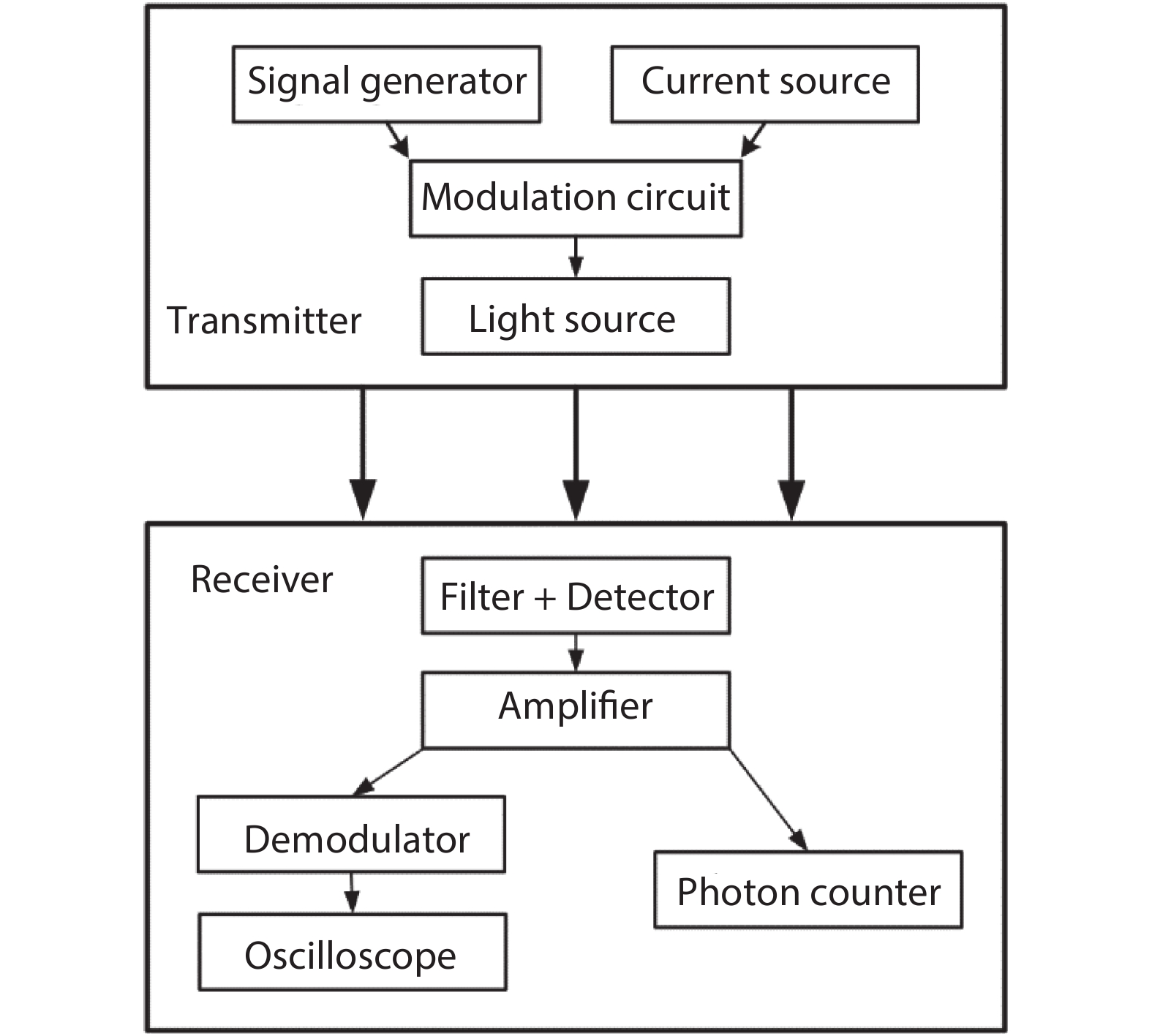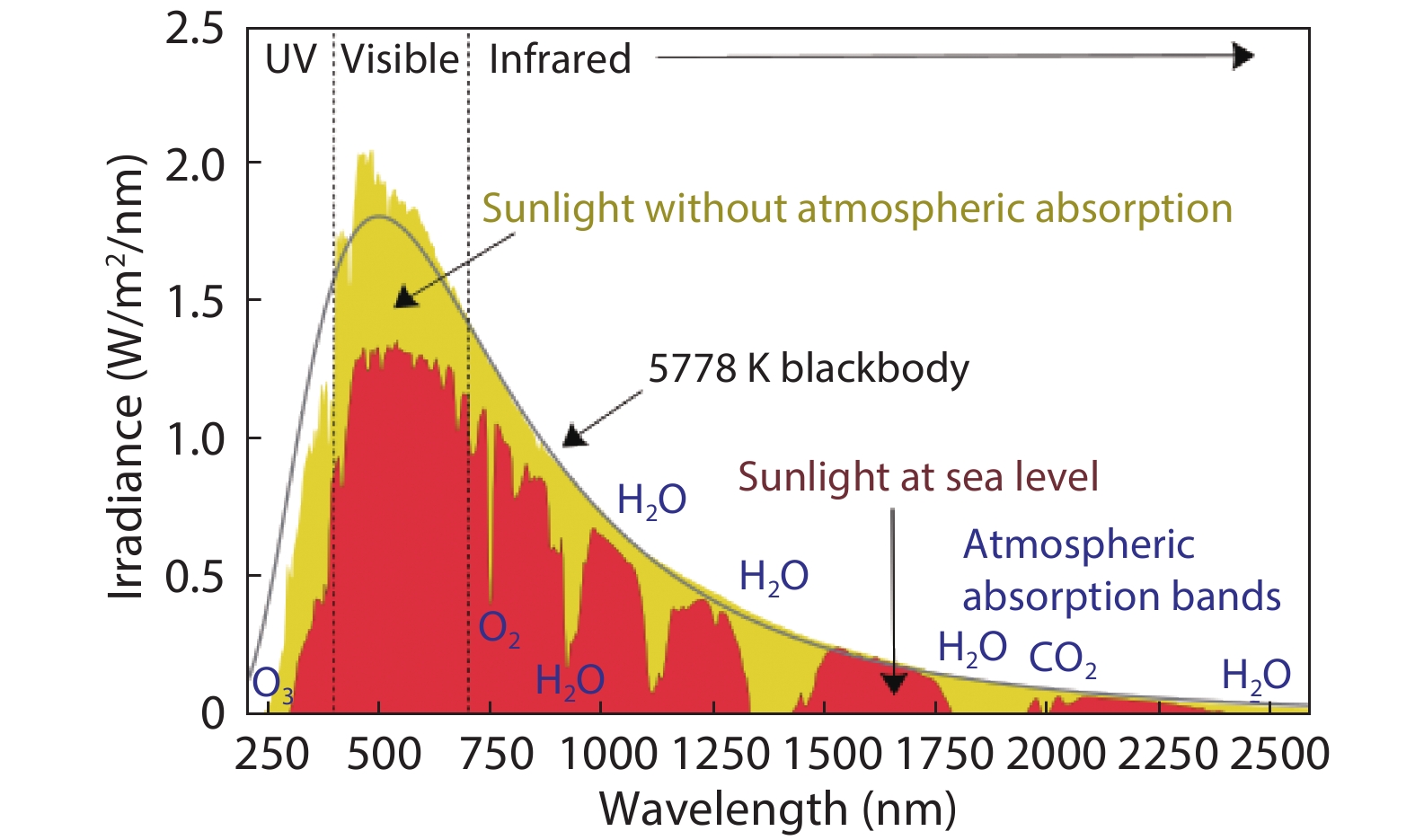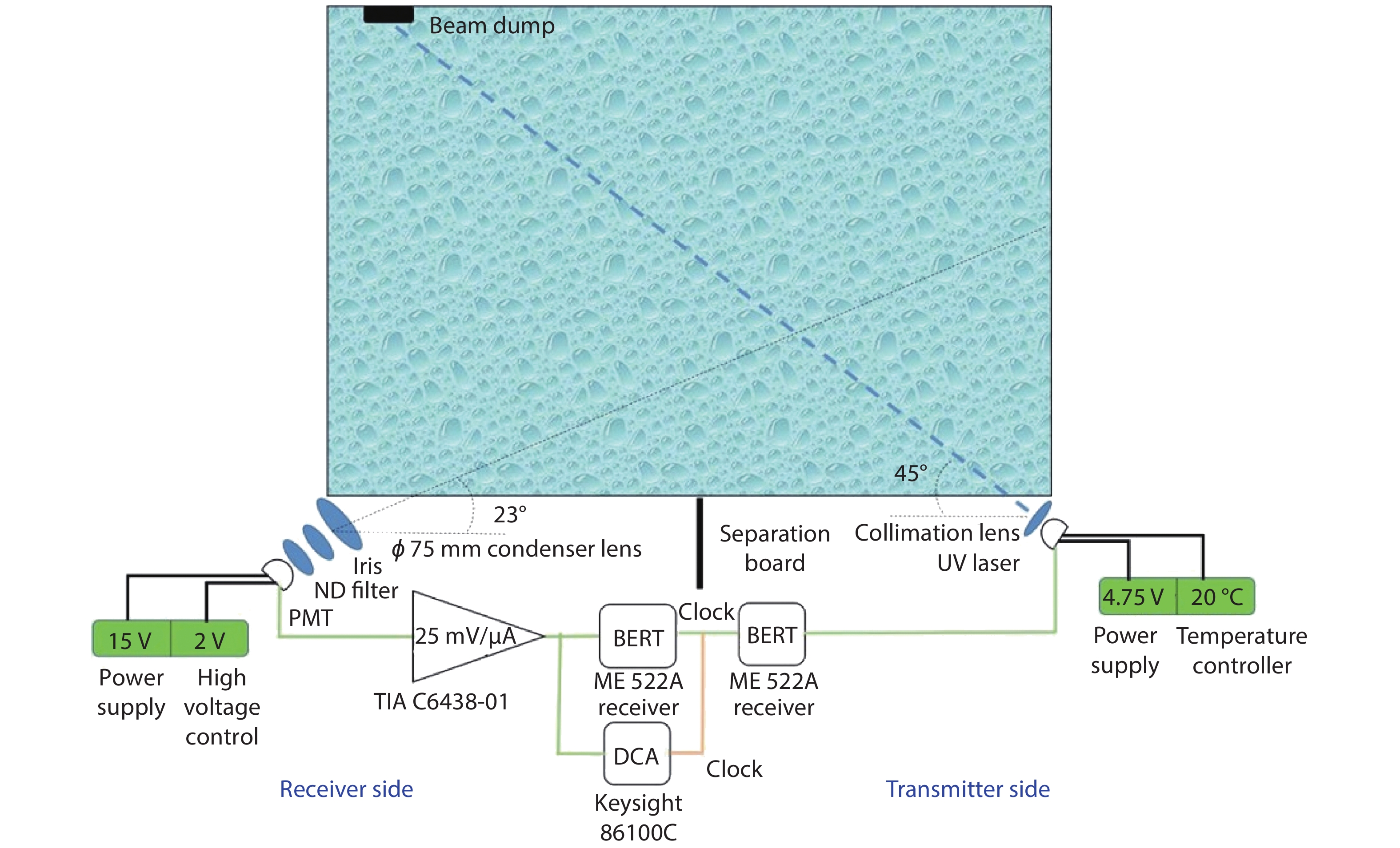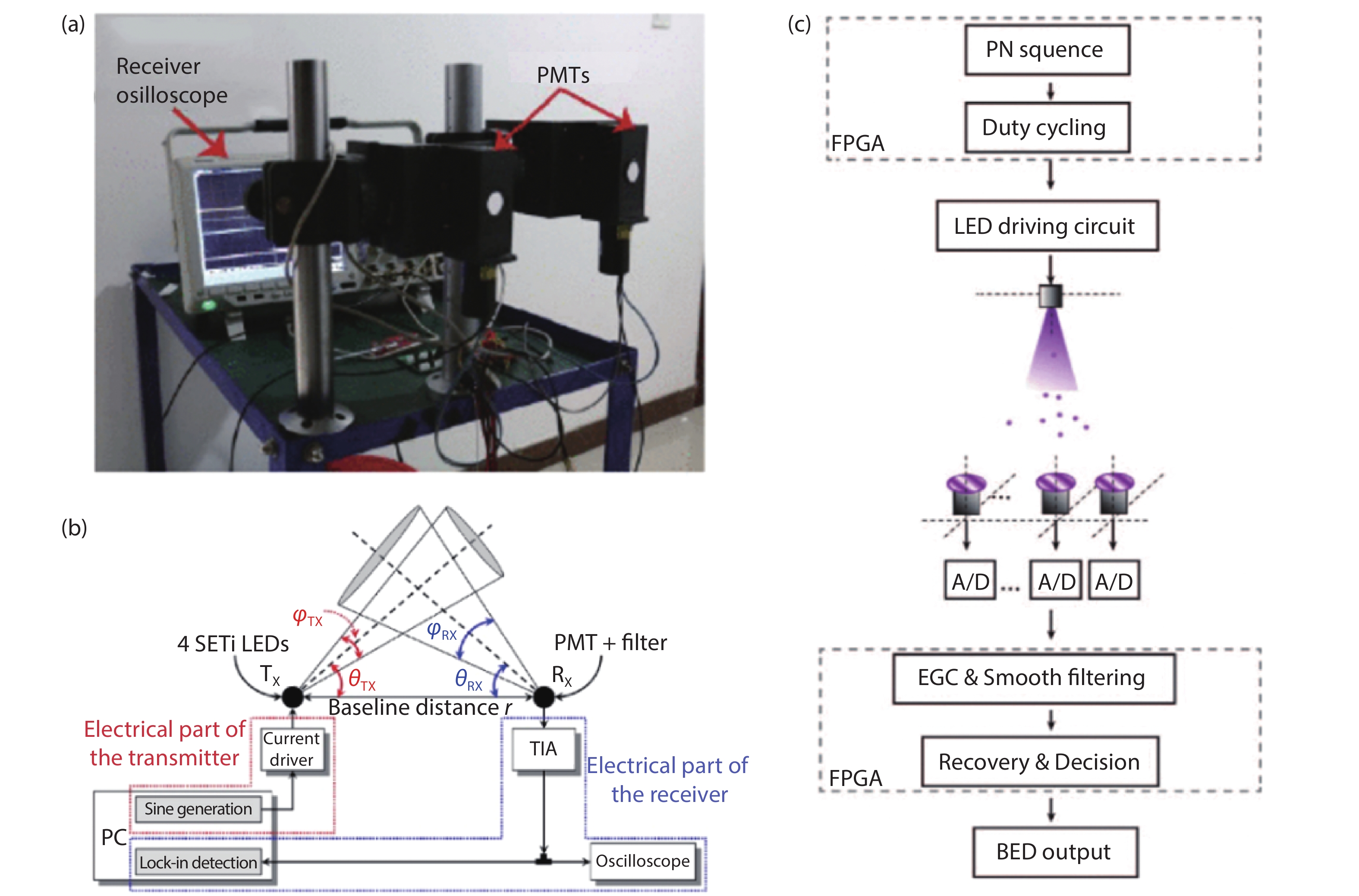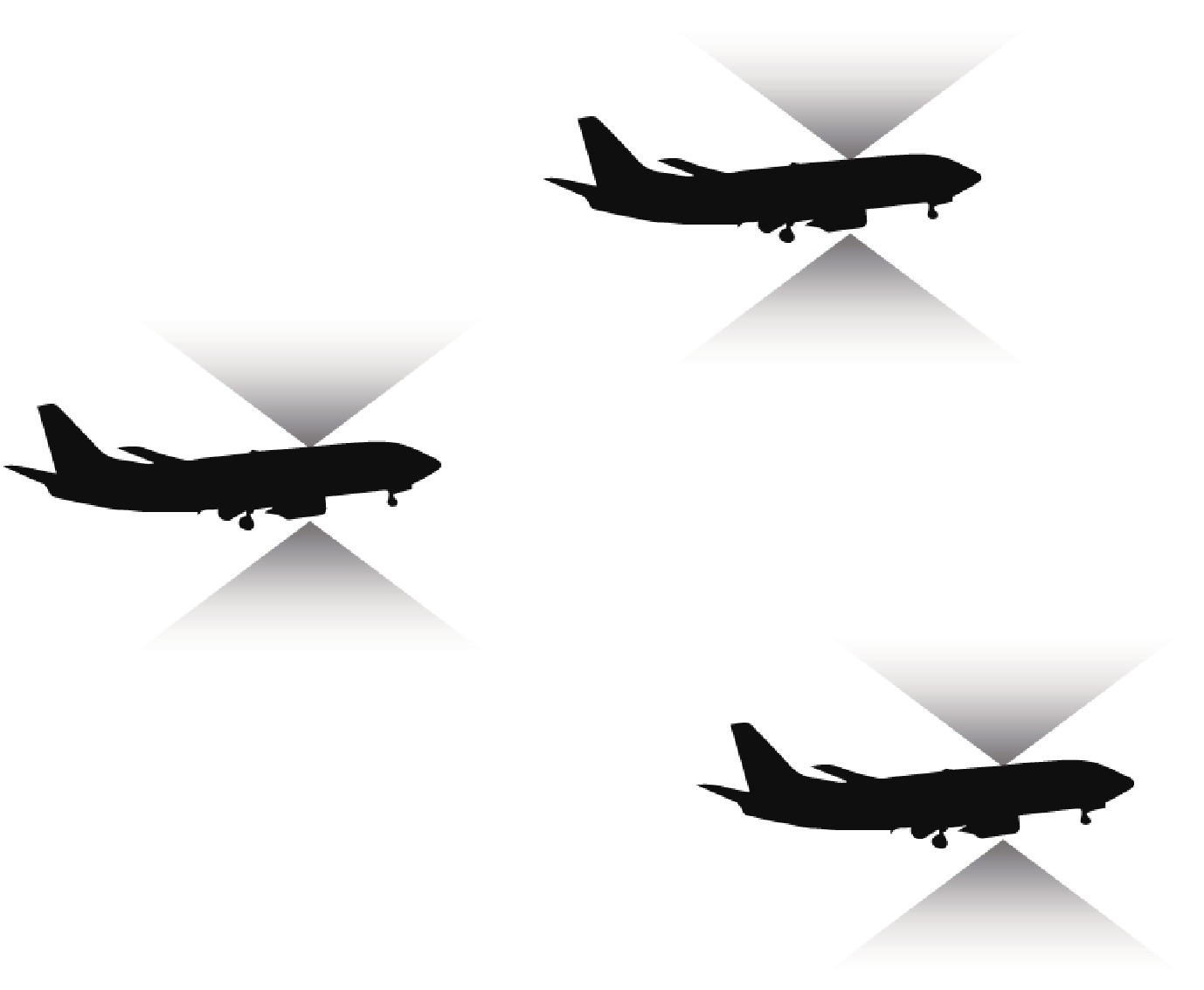| Citation: |
Liang Guo, Yanan Guo, Junxi Wang, Tongbo Wei. Ultraviolet communication technique and its application[J]. Journal of Semiconductors, 2021, 42(8): 081801. doi: 10.1088/1674-4926/42/8/081801
L Guo, Y N Guo, J X Wang, T B Wei, Ultraviolet communication technique and its application[J]. J. Semicond., 2021, 42(8): 081801. doi: 10.1088/1674-4926/42/8/081801.
Export: BibTex EndNote
|
Ultraviolet communication technique and its application
doi: 10.1088/1674-4926/42/8/081801
More Information-
Abstract
With recent developments of deep ultraviolet (DUV) light-emitting diodes and solar-blind detectors, UV communication (UVC) shows great potential in replacing traditional wireless communication in more and more scenarios. Based on the atmospheric scattering of UV radiation, UVC has gained considerable attention due to its non-line-of-sight ability, omnidirectional communication links and low background noise. These advantages make UVC an ideal option for covert secure communication, especially for military communication. In this review, we present the history and working principle of UVC with a special focus on its light sources and detectors. Comprehensive comparison and application of its light sources and detectors are provided to the best of our knowledge. We further discuss the future application and outlook of UVC. Hopefully, this review will offer valuable insights into the future development of UVC. -
References
[1] Khalighi M A, Uysal M. Survey on free space optical communication: A communication theory perspective. IEEE Commun Surv Tutor, 2014, 16(4), 2231 doi: 10.1109/COMST.2014.2329501[2] Rajbhandari S, McKendry J J, Herrnsdorf J, et al. A review of gallium nitride LEDs for multi-gigabit-per-second visible light data communications. Semicond Sci Technol, 2017, 32(2), 023001 doi: 10.1088/1361-6641/32/2/023001[3] Shaw G A, Nischan M L, Iyengar M A, et al. NLOS UV communication for distributed sensor systems. International Symposium on Optical Science and Technology, 2000, 83[4] Xu Z, Sadler B M. Ultraviolet communications: potential and state-of-the-art. IEEE Commun Mag, 2008, 46(5), 67 doi: 10.1109/MCOM.2008.4511651[5] Harvey G. A survey of ultraviolet communication systems. Washington: Naval Research Laboratory, 1964[6] White H. Communication by non-visible ultraviolet radiation. Berkeley: University of California Press, 1945[7] Sunstein D E. A scatter communications link at ultraviolet frequencies. PhD Dissertation, Massachusetts Institute of Technology, 1968[8] Charles B, Hughes B, Erickson A, et al. Ultraviolet laser-based communication system for short-range tactical applications. OE/LASE '94, 1994, 79[9] Shaw G A, Siegel A M, Model J, et al. Field testing and evaluation of a solar-blind UV communication link for unattended ground sensors. Defense and Security, 2004, 250[10] Shaw G A, Siegel A M, Model J. Extending the range and performance of non-line-of-sight ultraviolet communication links. Defense and Security Symposium, 2006, 62310C[11] Xu Z, Tsatsanis M K. Blind adaptive algorithms for minimum variance CDMA receivers. IEEE Trans Commun, 2001, 49(1), 180 doi: 10.1109/26.898261[12] Xu Z, Chen G, Abou-Galala F, et al. Experimental performance evaluation of non-line-of-sight ultraviolet communication systems. Optical Engineering + Applications, 2007, 67090Y[13] Xu Z, Ding H, Sadler B M, et al. Analytical performance study of solar blind non-line-of-sight ultraviolet short-range communication links. Opt Lett, 2008, 33(16), 1860 doi: 10.1364/OL.33.001860[14] Liu L D, Ni G Q, Zhong S D, et al. Application and detection of ultraviolet and their new development. Opt Technol, 1998, 2, 87 (in Chinese) doi: 10.1016/j.jalgebra.2014.12.015[15] Ni G Q. Study on ultraviolet communication through disengaged atmodphere. Opt Tech, 2000, 26, 297 (in Chinese)[16] Tang Y, Ni G, Zhang L, et al. Study of single scatter model in NLOS UV communication. Opt Tech, 2007, 33, 759 (in Chinese)[17] Tang Y, Wu Z L, Ni G Q, et al. NLOS single scattering model in digital UV communication. Asia-Pacific Opt Communi, 2008, 713615[18] Kedar D, Arnon S. Subsea ultraviolet solar-blind broadband free-space optics communication. Opt Eng, 2009, 48(4), 046001 doi: 10.1117/1.3120482[19] Raptis N, Pikasis E, Syvridis D. Power losses in diffuse ultraviolet optical communications channels. Opt Lett, 2016, 41(18), 4421 doi: 10.1364/OL.41.004421[20] Yin H, Chang S, Wang X, et al. Analytical model of non-line-of-sight single-scatter propagation. J Opt Soc Am A, 2010, 27(7), 1505 doi: 10.1364/JOSAA.27.001505[21] Yin H, Chang S, Jia H, et al. Non-line-of-sight multiscatter propagation model. J Opt Soc Am A, 2009, 26(11), 2466 doi: 10.1364/JOSAA.26.002466[22] Zhang H, Yin H, Jia H, et al. Study of effects of obstacle on non-line-of-sight ultraviolet communication links. Opt Express, 2011, 19(22), 21216 doi: 10.1364/OE.19.021216[23] Zhang H. Study on the characteristics of propagation of ultraviolet communication system. PhD Dissertation, National University of Defense Technology, 2012 (in Chinese)[24] Yin H, Yang J, Chang S, et al. Analysis of several factors influencing range of non-line-of-sight UV transmission. Asia-Pacific Optical Communications, 2007, 67833E[25] Jia H, Huang H X, Zhang H. Influence factors on data speed of wireless ultraviolet communication. Optics & Optoelectronic Technology, 2010, 1, 20 (in Chinese)[26] Zuo Y, Xiao H, Wu J, et al. A single-scatter path loss model for non-line-of-sight ultraviolet channels. Opt Express, 2012, 20(9), 10359 doi: 10.1364/OE.20.010359[27] Zuo Y, Wu Jian, Xiao H F, et al. Non-line-of-sight ultraviolet communication performance in atmospheric turbulence. China Commun, 2013, 10(11), 52 doi: 10.1109/CC.2013.6674210[28] Xiao H, Zuo Y, Wu J, et al. Non-line-of-sight ultraviolet single-scatter propagation model in random turbulent medium. Opt Lett, 2013, 38(17), 3366 doi: 10.1364/OL.38.003366[29] Guo L, Meng D, Liu K, et al. Experimental research on the MRC diversity reception algorithm for UV communication. Appl Opt, 2015, 54(16), 5050 doi: 10.1364/AO.54.005050[30] Meng X, Zhang M, Han D, et al. Experimental study on 1× 4 real-time SIMO diversity reception scheme for a ultraviolet communication system. European Conference on Networks and Optical Communications (NOC), 2015, 1[31] Sun Z, Zhang L, Qin Y, et al. 1 Mbps NLOS solar-blind ultraviolet communication system based on UV-LED array. International Conference on Optical Instruments and Technology 2017, 2017, 106170O[32] Sun X, Cai W, Alkhazragi O, et al. 375-nm ultraviolet-laser based non-line-of-sight underwater optical communication. Opt Express, 2018, 26(10), 12870 doi: 10.1364/OE.26.012870[33] Sun X, Kong M, Alkhazragi O, et al. Non-line-of-sight methodology for high-speed wireless optical communication in highly turbid water. Opt Commun, 2020, 461, 125264 doi: 10.1016/j.optcom.2020.125264[34] He X, Xie E, Islim M S, et al. 1 Gbps free-space deep-ultraviolet communications based on III-nitride micro-LEDs emitting at 262 nm. Photonics Res, 2019, 7(7), B41 doi: 10.1364/PRJ.7.000B41[35] Kojima K, Yoshida Y, Shiraiwa M, et al. 1.6-Gbps LED-based ultraviolet communication at 280 nm in direct sunlight. 2018 European Conference on Optical Communication (ECOC), 2018, 1[36] Laj P, Klausen J, Bilde M, et al. Measuring atmospheric composition change. Atmos Environ, 2009, 43(33), 5351 doi: 10.1016/j.atmosenv.2009.08.020[37] Walter V, Saska M, Franchi A. Fast mutual relative localization of uavs using ultraviolet led markers. 2018 International Conference on Unmanned Aircraft Systems (ICUAS), 2018, 1217[38] Andrews D L. Rayleigh scattering and Raman effect, theory. In: Encyclopedia of Spectroscopy and Spectrometry. Boston: Academic Press, 2016[39] Swinehart D F. The beer-lambert law. J Chem Educ, 1962, 39(7), 333 doi: 10.1021/ed039p333[40] Luettgen M R, Shapiro J H, Reilly D M. Non-line-of-sight single-scatter propagation model. J Opt Soc Am A, 1991, 8(12), 1964 doi: 10.1364/JOSAA.8.001964[41] Sholtes K A, Lowe K, Walters G W, et al. Comparison of ultraviolet light-emitting diodes and low-pressure mercury-arc lamps for disinfection of water. Environ Technol, 2016, 37(17), 2183 doi: 10.1080/09593330.2016.1144798[42] Pousset T, Cussac P, Zissis G, et al. Electronic ballast for high-pressure mercury lamps. 1996 IEEE Industry Applications Society Annual Meeting, 1996, 2109[43] Van Bommel W. Road lighting: Fundamentals, technology and application. Berlin: Springer, 2014[44] Ready J F. Industrial applications of lasers. Amsterdam: Elsevier, 1997[45] Sun K X, Leindecker N, Higuchi S, et al. UV LED operation lifetime and radiation hardness qualification for space flights. 7th International LISA Symposium, 2008, 012028[46] Fishburne E, Neer M E, Sandri G. Voice communication via scattered ultraviolet radiation. New Jersey: Aeronautical Research Associates Of Princeton Inc, 1976[47] Geller M, Keenan T E, Altman D E, et al. Optical non-line-of-sight covert, secure high data communication system. US Patents, US4493114, 1985[48] Puschell J J, Bayse R. High data rate ultraviolet communication systems for the tactical battlefield. Tactical Communications Conference, 1990, 253[49] Chen G, Xu Z, Sadler B M. Experimental demonstration of ultraviolet pulse broadening in short-range non-line-of-sight communication channels. Opt Express, 2010, 18(10), 10500 doi: 10.1364/OE.18.010500[50] Wang K, Gong C, Zou D, et al. Demonstration of a 400 kbps real-time non-line-of-sight laser-based ultraviolet communication system over 500 m. Chin Opt Lett, 2017, 15(4), 040602 doi: 10.3788/COL201715.040602[51] Liao L, Drost R J, Li Z, et al. Long-distance non-line-of-sight ultraviolet communication channel analysis: experimentation and modelling. IET Optoelectron, 2015, 9(5), 223 doi: 10.1049/iet-opt.2014.0121[52] Würtele M, Kolbe T, Lipsz M, et al. Application of GaN-based ultraviolet-C light emitting diodes – UV LEDs – for water disinfection. Water Res, 2011, 45(3), 1481 doi: 10.1016/j.watres.2010.11.015[53] Siegel S B. Light emitting apparatus and method for curing inks, coatings and adhesives. US Patents, US7175712, 2007[54] Hirayama H. Research status and prospects of deep ultraviolet devices. J Semicond, 2019, 40(12), 120301 doi: 10.1088/1674-4926/40/12/120301[55] Barolet D. Light-emitting diodes (LEDs) in dermatology. Semin Cutan Med Surg, 2008, 27(4), 227 doi: 10.1016/j.sder.2008.08.003[56] Khan A, Balakrishnan K, Katona T. Ultraviolet light-emitting diodes based on group three nitrides. Nat Photonics, 2008, 2(2), 77 doi: 10.1038/nphoton.2007.293[57] Kneissl M, Kolbe T, Chua C, et al. Advances in group III-nitride-based deep UV light-emitting diode technology. Semicond Sci Technol, 2010, 26(1), 014036 doi: 10.1088/0268-1242/26/1/014036[58] Li J, Ji G, Yang W, et al. Emission mechanism of high Al-content AlGaN multiple quantum wells. Chin J Lumin, 2016, 37(5), 513 (in Chinese) doi: 10.3788/fgxb20163705.0513[59] Komine T, Nakagawa M. Fundamental analysis for visible-light communication system using LED lights. IEEE Trans Consum Electron, 2004, 50(1), 100 doi: 10.1109/TCE.2004.1277847[60] Alkhazragi O, Hu F, Zou P, et al. 2.4-Gbps ultraviolet-C solar-blind communication based on probabilistically shaped DMT modulation. 2020 Optical Fiber Communication Conference, 2020, M3I.5[61] Alkhazragi O, Hu F, Zou P, et al. Gbit/s ultraviolet-C diffuse-line-of-sight communication based on probabilistically shaped DMT and diversity reception. Opt Express, 2020, 28(7), 9111 doi: 10.1364/OE.389262[62] Yoshida Y, Kojima K, Shiraiwa M, et al. An outdoor evaluation of 1-Gbps optical wireless communication using AlGaN-based LED in 280-nm band. 2019 Conference on Lasers and Electro-Optics (CLEO), 2019, 1[63] Yang Y, Chen X H, You B, et al. Design of solar blind ultraviolet LED real-time video transmission system. Infrared Laser Eng, 2018, 47, 1022001 (in Chinese) doi: 10.3788/IRLA201847.1022001[64] Sun X, Zhang Z, Chaaban A, et al. 71-Mbit/s ultraviolet-B LED communication link based on 8-QAM-OFDM modulation. Opt Express, 2017, 25(19), 23267 doi: 10.1364/OE.25.023267[65] Qin H, Zuo Y, Li F, et al. Analytical link bandwidth model based square array reception for non-line-of-sight ultraviolet communication. Opt Express, 2017, 25(19), 22693 doi: 10.1364/OE.25.022693[66] Xing Y, Zhang M, Han D, et al. Experimental study of a 2 × 2 MIMO scheme for ultraviolet communications. 2016 15th International Conference on Optical Communications and Networks (ICOCN), 2016, 1[67] Song P, Zhao T, Ke X, et al. Multi-user interference in a non-line-of-sight ultraviolet communication network. IET Commun, 2016, 10(13), 1640 doi: 10.1049/iet-com.2015.0921[68] Zhang M, Luo P, Guo X, et al. Spread spectrum-based ultraviolet communication with experiments. Chin Opt Lett, 2014, 12(10), 100602 doi: 10.3788/COL201412.100602[69] He Q, Xu Z, Sadler B M. Performance of short-range non-line-of-sight LED-based ultraviolet communication receivers. Opt Express, 2010, 18(12), 12226 doi: 10.1364/OE.18.012226[70] Chen G, Abou-Galala F, Xu Z, et al. Experimental evaluation of LED-based solar blind NLOS communication links. Opt Express, 2008, 16(19), 15059 doi: 10.1364/OE.16.015059[71] Shi J W, Chen C C, Sheu J K, et al. Linear cascade GaN-based green light-emitting diodes with invariant high-speed/power performance under high-temperature operation. IEEE Photon Technol Lett, 2008, 20(23), 1896 doi: 10.1109/LPT.2008.2005037[72] Shi J W, Sheu J K, Wang C K, et al. Linear cascade arrays of GaN-based green light-emitting diodes for high-speed and high-power performance. IEEE Photon Technol Lett, 2007, 19(18), 1368 doi: 10.1109/LPT.2007.903336[73] Shi J W, Sheu J K, Chen C H, et al. High-speed GaN-based green light-emitting diodes with partially n-doped active layers and current-confined apertures. IEEE Electron Device Lett, 2008, 29(2), 158 doi: 10.1109/LED.2007.914070[74] McKendry J J, Green R P, Kelly A, et al. High-speed visible light communications using individual pixels in a micro light-emitting diode array. IEEE Photon Technol Lett, 2010, 22(18), 1346 doi: 10.1109/LPT.2010.2056360[75] Huang Y, Guo Z, Huang H, et al. Influence of current density and capacitance on the bandwidth of VLC LED. IEEE Photon Technol Lett, 2018, 30(9), 773 doi: 10.1109/LPT.2018.2813665[76] Zhu S C, Zhao L X, Yang C, et al. GaN-based flip-chip parallel micro LED array for visible light communication. 2017 International Conference on Optoelectronics and Microelectronics Technology and Application, 2016, 102441Y[77] McKendry J J, Massoubre D, Zhang S, et al. Visible-light communications using a CMOS-controlled micro-light-emitting-diode array. J Light Technol, 2011, 30(1), 61 doi: 10.1109/JLT.2011.2175090[78] Ferreira R X, Xie E, McKendry J J, et al. High bandwidth GaN-based micro-LEDs for multi-Gb/s visible light communications. IEEE Photon Technol Lett, 2016, 28(19), 2023 doi: 10.1109/LPT.2016.2581318[79] Bai J, Cai Y, Feng P, et al. Ultra-small, ultra-compact and ultra-high efficient InGaN micro light emitting diodes (µLEDs) with narrow spectral linewidth. ACS Nano, 2020, 14(6), 6909 doi: 10.1021/acsnano.0c01180[80] Rashidi A, Monavarian M, Aragon A, et al. Nonpolar m-plane InGaN/GaN micro-scale light-emitting diode with 1.5 GHz modulation bandwidth. IEEE Electron Device Lett, 2018, 39(4), 520 doi: 10.1109/LED.2018.2803082[81] Ploch N L, Rodriguez H, Stolmacker C, et al. Effective thermal management in ultraviolet light-emitting diodes with micro-LED arrays. IEEE Trans Electron Devices, 2013, 60(2), 782 doi: 10.1109/TED.2012.2234462[82] Zhang J, Wu S, Rai S, et al. AlGaN multiple-quantum-well-based, deep ultraviolet light-emitting diodes with significantly reduced long-wave emission. Appl Phys Lett, 2003, 83(17), 3456 doi: 10.1063/1.1623321[83] Hwang S, Islam M, Zhang B, et al. A hybrid micro-pixel based deep ultraviolet light-emitting diode lamp. Appl Phys Express, 2010, 4(1), 012102 doi: 10.1143/APEX.4.012102[84] Wu S, Chhajed S, Yan L, et al. Matrix addressable micro-pixel 280 nm deep UV light-emitting diodes. Jpn J Appl Phys, 2006, 45(4L), L352 doi: 10.1143/JJAP.45.L352[85] Adivarahan V, Wu S, Sun W, et al. High-power deep ultraviolet light-emitting diodes basedon a micro-pixel design. Appl Phys Lett, 2004, 85(10), 1838 doi: 10.1063/1.1784882[86] Adivarahan V, Heidari A, Zhang B, et al. 280 nm deep ultraviolet light emitting diode lamp with an AlGaN multiple quantum well active region. Appl Phys Express, 2009, 2(10), 102101 doi: 10.1143/APEX.2.102101[87] Sun W, Adivarahan V, Shatalov M, et al. Continuous wave milliwatt power AlGaN light emitting diodes at 280 nm. Jpn J Appl Phys, 2004, 43(11A), L1419 doi: 10.1143/JJAP.43.L1419[88] Wu S, Adivarahan V, Shatalov M, et al. Micro-pixel design milliwatt power 254 nm emission light emitting diodes. Jpn J Appl Phys, 2004, 43(8A), L1035 doi: 10.1143/JJAP.43.L1035[89] Zhu S, Lin S, Li J, et al. Influence of quantum confined Stark effect and carrier localization effect on modulation bandwidth for GaN-based LEDs. Appl Phys Lett, 2017, 111(17), 171105 doi: 10.1063/1.4993230[90] Mickevičius J, Tamulaitis G, Kuokštis E, et al. Well-width-dependent carrier lifetime in AlGaN∕ AlGaN quantum wells. Appl Phys Lett, 2007, 90(13), 131907 doi: 10.1063/1.2717145[91] Lee J W, Ha G, Park J, et al. AlGaN deep-ultraviolet light-emitting diodes with localized surface plasmon resonance by a high-density array of 40 nm Al nanoparticles. ACS Appl Mater Interfaces, 2020, 12(32), 36339 doi: 10.1021/acsami.0c08916[92] Wang C, Chiou Y, Hsiang C, et al. Enhancement of optical performance of near-UV nitride-based light emitting diodes with different aluminum composition barrier structure. Phys Status Solidi A, 2014, 211(8), 1769 doi: 10.1002/pssa.201330586[93] Kajitani R, Kawasaki K, Takeuchi M. Barrier-height and well-width dependence of photoluminescence from AlGaN-based quantum well structures for deep-UV emitters. Mater Sci Eng B, 2007, 139(2/3), 186 doi: 10.1016/j.mseb.2007.02.006[94] Guttmann M, Höpfner J, Reich C, et al. Effect of quantum barrier composition on electro-optical properties of AlGaN-based UVC light emitting diodes. Semicond Sci Technol, 2019, 34(8), 085007 doi: 10.1088/1361-6641/ab2c1a[95] Tian K, Chen Q, Chu C, et al. Investigations on AlGaN-based deep-ultraviolet light-emitting diodes with Si-doped quantum barriers of different doping concentrations. Phys Status Solidi RRL, 2018, 12(1), 1700346 doi: 10.1002/pssr.201700346[96] Guo W, Xu H, Yang Z, et al. Performance enhancement of ultraviolet light emitting diode incorporating Al nanohole arrays. Nanotechnology, 2018, 29(45), 45LT01 doi: 10.1088/1361-6528/aaddc8[97] Huang K, Gao N, Wang C, et al. Top-and bottom-emission-enhanced electroluminescence of deep-UV light-emitting diodes induced by localised surface plasmons. Sci Rep, 2014, 4(1), 4380 doi: 10.1038/srep04380[98] Gao N, Huang K, Li J, et al. Surface-plasmon-enhanced deep-UV light emitting diodes based on AlGaN multi-quantum wells. Sci Rep, 2012, 2(1), 816 doi: 10.1038/srep00816[99] Zhu S, Wang J, Yan J, et al. Influence of AlGaN electron blocking layer on modulation bandwidth of GaN-based light emitting diodes. ECS Solid State Lett, 2014, 3(3), R11 doi: 10.1149/2.007403ssl[100] Kharraz O, Forsyth D. Performance comparisons between PIN and APD photodetectors for use in optical communication systems. Optik, 2013, 124(13), 1493 doi: 10.1016/j.ijleo.2012.04.008[101] Photonics H. Photomultiplier tubes. Hamamatsu: Hamamatsu Photonics, 2000[102] Chen Y, Zhang Z, Jiang H, et al. The optimized growth of AlN templates for back-illuminated AlGaN-based solar-blind ultraviolet photodetectors by MOCVD. J Mater Chem C, 2018, 6(18), 4936 doi: 10.1039/C8TC00755A[103] Brown D M, Downey E T, Ghezzo M, et al. Silicon carbide UV photodiodes. IEEE Trans Electron Devices, 1993, 40(2), 325 doi: 10.1109/16.182509[104] Shao Z G, Chen D J, Lu H, et al. High-gain AlGaN solar-blind avalanche photodiodes. IEEE Electron Device Lett, 2014, 35(3), 372 doi: 10.1109/LED.2013.2296658[105] Higashiwaki M, Sasaki K, Murakami H, et al. Recent progress in Ga2O3 power devices. Semicond Sci Technol, 2016, 31(3), 034001 doi: 10.1088/0268-1242/31/3/034001[106] Li W, Zhang X, Meng R, et al. Epitaxy of III-nitrides on β-Ga2O3 and its vertical structure LEDs. Micromachines, 2019, 10(5), 322 doi: 10.3390/mi10050322[107] Pearton S, Yang J, Cary IV P H, et al. A review of Ga2O3 materials, processing, and devices. Appl Phys Rev, 2018, 5(1), 011301 doi: 10.1063/1.5006941[108] Hu G, Shan C, Zhang N, et al. High gain Ga2O3 solar-blind photodetectors realized via a carrier multiplication process. Opt Express, 2015, 23(10), 13554 doi: 10.1364/OE.23.013554[109] Mahmoud W E. Solar blind avalanche photodetector based on the cation exchange growth of β-Ga2O3/SnO2 bilayer heterostructure thin film. Sol Energy Mater Sol Cells, 2016, 152, 65 doi: 10.1016/j.solmat.2016.03.015[110] Guo X, Hao N, Guo D, et al. β-Ga2O3/p-Si heterojunction solar-blind ultraviolet photodetector with enhanced photoelectric responsivity. J Alloys Compd, 2016, 660, 136 doi: 10.1016/j.jallcom.2015.11.145[111] Zhao B, Wang F, Chen H, et al. Solar-blind avalanche photodetector based on single ZnO–Ga2O3 core–shell microwire. Nano Lett, 2015, 15(6), 3988 doi: 10.1021/acs.nanolett.5b00906[112] Du X, Mei Z, Liu Z, et al. Controlled growth of high-quality ZnO-based films and fabrication of visible-blind and solar-blind ultra-violet detectors. Adv Mater, 2009, 21(45), 4625 doi: 10.1002/adma.200901108[113] Alema F, Hertog B, Ledyaev O, et al. High responsivity solar blind photodetector based on high Mg content MgZnO film grown via pulsed metal organic chemical vapor deposition. Sens Actuator A, 2016, 249, 263 doi: 10.1016/j.sna.2016.08.036[114] Lavigne C, Durand G, Roblin A. Ultraviolet light propagation under low visibility atmospheric conditions and its application to aircraft landing aid. Appl Opt, 2006, 45(36), 9140 doi: 10.1364/AO.45.009140[115] Yuan R, Ma J. Review of ultraviolet non-line-of-sight communication. China Commun, 2016, 13(6), 63 doi: 10.1109/CC.2016.7513203[116] Vavoulas A, Sandalidis H G, Chatzidiamantis N D, et al. A survey on ultraviolet C-band (UV-C) communications. IEEE Commun Surv Tutor, 2019, 21(3), 2111 doi: 10.1109/COMST.2019.2898946[117] Razeghi M. Deep ultraviolet light-emitting diodes and photodetectors for UV communications. Integrated Optoelectronic Devices, 2005, 2005, 30[118] Li J M, Liu Z, Liu Z Q, et al. Advances and prospects in nitrides based light-emitting-diodes. J Semicond, 2016, 37(6), 061001 doi: 10.1088/1674-4926/37/6/061001 -
Proportional views





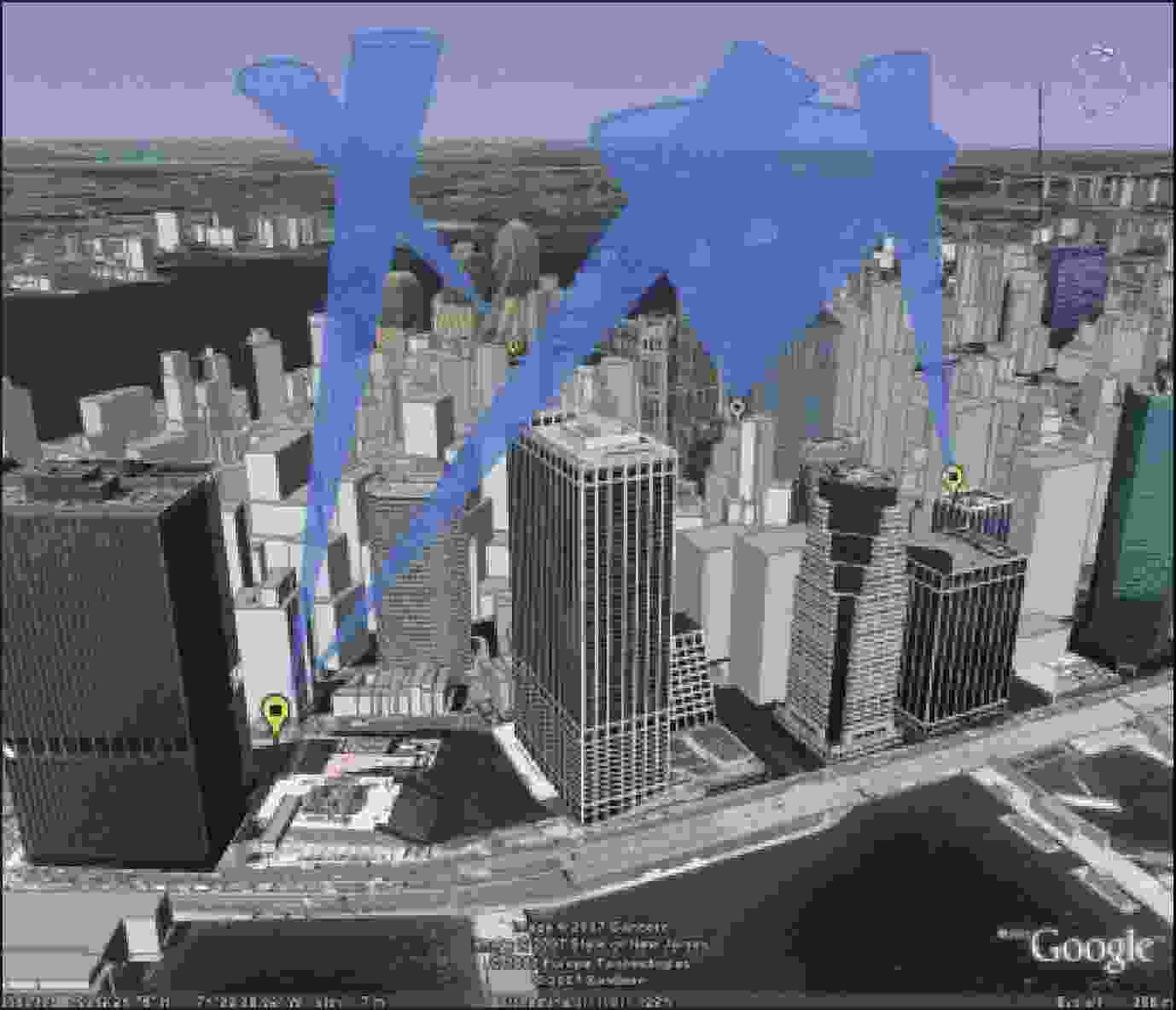
 DownLoad:
DownLoad:
